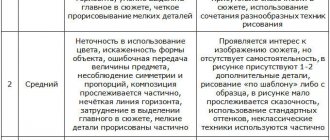Each person during a conversation uses nonverbal signals with which he subconsciously complements or refute what was said. Such signals are involuntary, but with proper training you can learn to control them and recognize the facial expressions of other people.
The psychology of human gestures and facial expressions studies the features of using gestures, various combinations, and the possibility of preventing an emotional reaction. By understanding the main types of reactions and learning to distinguish them, a person will be able to determine whether his interlocutor is telling the truth, his real emotions.
The meaning of gestures
In the human psyche, the meaning of non-verbal signals - gestures and facial expressions - lies in the sphere of the unconscious. People may not pay attention to their own and others' attempts to convey information, but they subconsciously recognize them. To read messages more accurately, it is necessary to study their meaning in accordance with the cultural environment to which the interlocutors belong.
Despite the common meaning of most facial reactions, in some cultures common gestures may have the opposite meaning. Thus, nodding your head usually means agreement, but in some cultures it means denial.
Body language varies depending on the speaker's gender, age, social status and other personal characteristics. Communication using gestures is limited: movements can only convey basic emotions, but it is impossible to show the subtleties of attitude. Therefore, body language is used to complement and enhance the emotional coloring of speech. The conscious use of gestures and control of facial expressions is the result of a volitional effort, aimed mainly at the desire to hide a lie.
Body language and sign language should not be confused. Unlike unconscious muscle reactions, sign language is a full-fledged linguistic unit used for normal communication. The use of sign language allows people with hearing and speech impairments to communicate and socialize successfully.
Features of foreign language of facial expressions and gestures
Abroad, the language of facial expressions and gestures, understandable to the residents of Russia, is transformed and modified. When planning a trip to a particular country, you must definitely study the meaning of non-verbal signals in this country, since the same gestures in different countries can be interpreted differently.
For example, hugging and kissing when meeting in England is regarded as vulgar behavior. By tapping his finger on his nose, the Englishman emphasizes that his words are secret information. A clenched fist with the index finger raised is considered an offensive gesture in England.
If in Holland a person twirls his finger at his temple during a conversation, he emphasizes the wit of his interlocutor. Rubbing the back of his nose, the Dutchman talks about greed.
The French express their admiration for something by blowing a kiss. If a Frenchman pulls his lower eyelid down with his index finger, he expresses doubt in the words of his interlocutor. In France, distrust of a person is expressed by rubbing the bridge of the nose.
Thus, in the psychology of communication, human facial expressions and gestures play an important role. They make communication interesting and help distinguish truth from lies. Knowledge of the facial expressions and gestures of other countries will help you avoid awkward situations when communicating with foreigners.
Communication with foreigners
Scientific research
Representatives of Ancient Rome already possessed the study of body language and the desire to characterize gestures. The science formed on the basis of the observations of researchers was called kenesics. The greatest contribution to its development was made by:
- J. Balwer. He created a fundamental work devoted to gestures, in particular, hand movements.
- I. F. Lavater. He studied physiognomy and conducted a comparative analysis of emotions and gestures.
- G. K. Lichtenberg. He published several works in which he examined Lavater’s ideas in detail, calling them superficial and far from reality.
- C. Bell. He studied the nervous system, studied the correspondence of facial features to the emotions experienced. He deduced a pattern between emotional reaction and muscular activity.
- C. Darwin. Studied the correspondence of facial expression to emotional reaction.
- F. Bacon. I came to the conclusion that there is a special body language that is understood by all peoples of the world.
- F. Lowen. In his book on the psychology of the body, he outlined the basics of psychosomatic problems
Psychologists and sociologists believe that body language can become a universal means of communication between people of different social groups.
Gestures around the world
The psychology of the human body can be viewed differently, depending on the national culture. Here are some interesting facts:
- In some countries (particularly Bulgaria, India and Greece), shaking your head from side to side means agreement, and nodding means refusal.
- In countries that practice Buddhism, patting a child on the head is perceived as aggression. In general, the reaction to any touch is negative, since it is a violation of personal space.
- A finger to the temple (demonstration of dementia) in Holland is perceived as praise for mental abilities, and in the UK - as advice to live by one’s own mind.
- Among the Spaniards, touching the earlobe is considered an indication of the presence of a person of non-traditional sexual orientation in the company.
- Showing your palm with your fingers outstretched is an insult to a Greek.
- When in Japan, give gifts with both hands. If you do this with one hand, the person may be offended.
- Crossing your fingers for luck is an obscene gesture in Vietnam.
- In African countries, it is indecent to look your interlocutor in the eyes for a long time.
Main body segments
When assessing the meaning of posture and movements, you need to pay attention to the segment of the body that gives signals. Each department is responsible for a specific issue:
- eyes - an expression of fear associated with personal relationships;
- mouth - difficulties in communication, fear of rejection;
- neck - negative emotions, anger, aggression;
- chest - suppression of emotional reactions, restraint, self-control;
- diaphragm - social anxiety, volitional efforts, feeling of satisfaction;
- stomach area - feeling of danger, external threat;
- pelvis and groin area - true feelings, intimate interest.
When assessing the reaction of individual body segments, it is always necessary to compare the movements as a whole. Warning should be caused by desynchronization of movements of different departments: a person cannot control his body and it betrays his deception.
“Speak for sure!”, Alan Pease, Barbara Pease
0
See all photos in the gallery
Written by international experts in "communication technology," this book will teach you how to separate politeness from the grain of truth and decipher nonverbal cues. You will be able to appreciate your partner’s sincerity and correctly interpret his thoughts, and the ability to give compliments and listen carefully will allow you not only to achieve success in your personal life, but will also raise you to the top of your professional career and make you a “master of conversation.”
Gestures of closedness, isolation
For a full psychological assessment of a person based on body movements and gestures, it is necessary to distinguish between shyness and purposeful secrecy. He speaks about reluctance to communicate, fear and hostility:
- Crossing your arms over your chest. While sitting, a person can also cross their legs with their knee forward. This indicates a desire to fence off with armor, to be as far as possible from the interlocutor, distrust and hostility.
- Tightness, hands on knees. A defensive posture, the desire to quickly end the conversation.
- Stomping, tapping fingers, throwing objects from hand to hand. The desire to divert attention from oneself, to avoid a negative reaction.
For many people, secretive postures are comfortable, and they unconsciously adopt them when talking with trusted people. But during business communication they should be avoided so as not to cause misunderstanding.
Gestures of sincerity and openness
Knowing the psychology of the body will help you understand how a person is disposed towards you, whether he is inclined to talk. Here are some gestures that symbolize sincerity, openness and benevolence:
- A person actively gestures, holding his hands in front of him, palms up.
- A person tries to reduce the distance during a conversation (sits closer or tries to establish tactile contact).
- An unbuttoned jacket is a symbol of openness and trust in business negotiations. A slightly loose tie knot has a similar meaning.
- Legs straightened and extended forward (if the interlocutors are communicating while sitting).
- Smile all over your face. If the eyes narrow and the nostrils widen, it means that the person is sincerely glad to see you and is committed to productive communication.
- A deep sigh of relief. Having noticed such a gesture, you can be sure that your conversation with the interlocutor will be easy and confidential.
Gestures to help recognize lies
The main thing that any student of body language strives for is the ability to detect lies in the speech of the interlocutor. They say about dishonesty:
- Frequently touching the face, scratching the forehead and nose, covering the mouth with the hand. A person literally tries to stop himself from telling a lie, to cover his face, avoiding a direct condemning gaze.
- Stroking, scratching the neck. Talks about lies caused by fear or misunderstanding. Such gestures are often demonstrated by subordinates when talking with their boss.
- Touching the earlobe. During communication, touching the ears means that the person does not believe in the information he heard, but tries not to show it.
- Quick, frequent smiles, licking lips. It means excitement, a desire to hide deception.
The discrepancy between gestures and spoken words indicates a lie, but individual characteristics must be taken into account. Perhaps the dissonance is caused by anatomical features and is a consequence of the disease. Also characteristic is the discrepancy between movement and words among foreigners who do not know the language well and try to supplement words with gestures.
How to recognize truth and lies from a person
Purple color in human psychology - what does it mean who likes it?
It is quite simple to recognize a person’s sincerity or deception by facial expressions and gestures:
- When people tell the truth, they look the other person in the eyes, their palms are open and visible. The person turns his whole body towards the interlocutor, the soles of his feet are also directed towards the communication partner. The pace of his speech is calm and even.
- If a person is deceiving, he will avoid eye contact. During the conversation, he will turn away from the interlocutor, touch his face (adjust his glasses, touch his nose, cover his mouth with his hand). His speech will be confused.
Interesting. When little children lie, they cover their mouths with their hands because they know that lying is wrong. Adults have great control over their body, so the desire to stop the flow of false speeches manifests itself in an erased form: touching various parts of the face.
Deceives
Gestures warning of aggression
It is important to recognize gestures of aggression and threats in a timely manner - this makes it possible to prevent a conflict in time and get away from the direct line of attack of the interlocutor. An aggressive attitude manifests itself:
- Clenching your fists. The interlocutor speaks in a calm tone, his posture is relaxed, but his hands are constantly clenched into fists - a clear signal of pent-up anger.
- Fists resting on the surface of the table, hips or pressed to the waist - a direct threat, readiness to attack.
- Hands hidden behind back. The person is literally trying to control himself and not show aggression.
- Pursed lips, tightly clenched jaws. They express contempt and dissatisfaction with the interlocutor.
- Scratching the back of the neck and the back of the head. Anticipation of attack, demonstration of readiness for defense.
If during a conversation a person twitches his upper lip, flares his nostrils, squints his eyes, he is ready for open confrontation, demonstrates superiority over his opponent, and threatens.
"Negotiation. The Complete Course by Gavin Kennedy
0
A book about negotiating in any situation. This is a fun, accessible and reliable guide to the best work in negotiation training. Using his 25 years of experience as a negotiator and business coach, Kennedy critically examines the most popular negotiation practices, helping the reader adopt the most effective ones. The book talks about how to prepare for an upcoming meeting, how to advantageously present your point of view, how to negotiate and how to make the negotiation process mutually beneficial for all parties involved.
Advice from psychologists
An experienced psychologist is able to read the gestures and facial expressions of even a very secretive person and assess his emotional state regardless of verbal information. For people unfamiliar with the subtleties of nonverbal cues, it can be difficult at first to monitor two channels of information simultaneously. You can start with the following techniques:
- note the movements that a person reproduces most often and compare them with spoken words;
- ask your interlocutor leading and clarifying questions, ask the same information several times;
- do not look directly at the interlocutor, look away so as not to arouse suspicion;
- having caught a person in a lie, do not immediately express complaints, do not interrupt the story - perhaps the first conclusions will turn out to be incorrect;
- develop observation skills, learn to compare information.
Special books from which you can glean theoretical information and constant practice will help you learn to understand body language. To learn to read different people, you should constantly train your ability to study emotional reactions, movements, and other nonverbal signals. It is important to compare signals and identify a common series of symbolic gestures. This will help you recognize body signals without thinking in the future.
Useful tips
Studying the psychology of mind and body allows you to read people like an open book even before they have had time to convey any verbal information to you. But the process of cognition is quite long and complex. If you are interested in this issue, follow these recommendations:
- Learn to feel and understand your own body, compare feelings and desires with specific body movements. This will help you “unravel” other people easier.
- Do not rush to conclusions and do not rely on personal guesses and interpretations. Test your assumptions based on indirect evidence. Sometimes it would be useful to ask your interlocutor a delicate clarifying question.
- Having expressed your assumptions to your interlocutor, do not insist that you are right. Ask him to talk about his experiences and compare what he hears with previously made observations of body movements.
- don't be afraid of mistakes and corrections. This only deepens and develops your knowledge and skills.
- When observing your interlocutor, be sensitive. Few people like to feel a close, examining gaze on themselves. This can make a person close down, after which you will definitely not receive any objective information.
- Develop your powers of observation. Train your abilities in any place and situation, try to study both acquaintances and strangers.
How to recognize gestures?
To get a complete picture of the correspondence of gestures and facial expressions to a person’s words, you need to evaluate the meaning of all movements:
- Gait. By the way the interlocutor enters the room, you can assess the degree of confidence and self-esteem: a long step, a confident gait - purposefulness and ambition, a shuffling gait - lack of will and aspirations, a slow, imposing gait - narcissism and demonstrativeness.
- Hand position while moving and sitting. Elbows pressed to the body indicate isolation, unsociability; broad gestures, waving your arms when talking - openness, sociability. Touching your interlocutor is a desire to enter the zone of closest trust, a desire to subjugate.
- Direction of view. The position of the eyes shows how interested the interlocutor is in the conversation and the desire to defend his point of view. A downward gaze means the person is telling the truth; an upward gaze means he makes it up as he goes along.
- Posture. A straightened neck and a raised chin indicate a person’s general confidence; a bowed head is a sign of humility and timidity.
- Body direction. A body leaning forward means interest in the conversation, sympathy for the interlocutor, a desire to reduce the emotional distance, and gain trust.
If a person often changes position during a conversation, his opinion is unstable. He is ready to accept someone else's point of view and submit to his interlocutor.
Psychology of gestures and facial expressions
A person’s facial expressions, gestures, and postures allow us to understand a person without words. Let's consider the main aspects that require special attention:
Torso bends
If a person tilts his torso and head towards the interlocutor, this indicates a clear interest, a desire to communicate, find common topics, and a desire for mutual understanding. When leaning back in a chair, looking around - there is a lack of interest, inattention;
Personal space and communication areas
Each person has 3 zones:
- personal - (from approximately 46 cm to a meter)
- social - (from 1.2 to 3.6 meters)
- public - (over 3.6 meters)
The desire of a stranger to be very close usually causes a negative reaction. Only friends and close people can come close to us; it is worth considering and not violating these zones when meeting new people. You should not clap on the shoulder or touch a stranger; this will cause negativity at the subconscious level.
Standing torso position
Body swaying - a person feels anxious or in a hurry.
Fidgeting, shifting from foot to foot - speaks of uncertainty: the person is nervous, worried, perhaps wants to leave quickly or end the conversation.
The legs stand straight and directed towards the interlocutor - the person is ready to communicate, interested in the conversation.
Legs crossed - a defensive position: a person feels insecure, is in a new environment for the first time, among strangers, or does not quite agree with the opinions of others.
You can learn to understand people if you carefully monitor your interlocutor during a conversation.
Hand position
This often helps to learn to understand people, to determine a person’s mood and state:
- Hands on hips are a signal for a man: ready for action, conversation, active action, there may be hostility, this position is used in disputes. For women - they emphasize the beauty of the costume or the decisiveness of the mood, depending on the situation.
- Thumbs tucked into a belt or in pockets - a person wants to attract the attention of the opposite sex. In a conversation between men - evaluation, rivalry, turns into conflict, aggression with a tense position of the legs and torso.
- Hands open - a position conducive to communication and trust.
- Arms crossed on the chest - a defensive position, a negative attitude towards the situation. With clenched fists - hostility. When grasping the forearms - nervousness, anticipation of something exciting. The arms are crossed and the thumb up is a posture of superiority and self-confidence.
- Hands in front of you, palms on top of your palms - help a person gain confidence during a speech, for example. They talk about the need for support, lack of confidence.
- Raising the shoulders - “I can’t say for sure”, “I’m not sure”, but sometimes, if you want to tell a lie, a sharp shrug of the shoulders occurs.
- Waving your arms - a person cannot restrain his emotions, is overly excited: angry, upset or indignant.
- Hands behind your back - openness, self-confidence, even superiority at times (bosses, managers, government officials often use this hand position).
- Hand behind head - a person loves to dominate, to feel superior.
- The desire to hide fingers - usually using pockets or other methods, symbolizes hiding information, lack of honesty, and trust in a conversation.
- Wrinkled hands - a person is very nervous, perhaps experiencing stress, tension or depression.
- Tapping your fingers is a sign of haste, nervousness, you need a quick solution to the problem, or help in calming down.
- Hand in the “house” position - self-confident people prefer to join their fingers, building a pyramid, observed among diplomats and ministers.
- Rubbing hands - impatience, anticipation of an event, obtaining information, great interest.
We read a person’s gestures and facial expressions, observing the movements of the hands, head, and facial expressions.
Head Gestures
They will also help you learn to understand people:
- Tilt towards the interlocutor - interest in communication.
- Sudden movements of the head do not agree with the point of view.
- Leaning back - arrogance, contempt.
- Nodding your head is a desire to be liked, a sign of agreement, and support for your interlocutor.
- Turning the head - doubts about the words spoken, misunderstanding or disagreement.
- A low head means self-doubt, low self-esteem. The person feels awkward, uncomfortable, ready to make concessions, the person does not always track his interests.
- Scratching the head - a person is embarrassed, feels insecure, does not understand the essence of the question or reflection.
Facial expressions and gestures
- Covering your mouth with your hand is a desire to hide something, false information.
- Touching the tip of the nose is a modified gesture of the same meaning: disbelief in words, suspicion, desire to hide a lie.
- Rubbing the eyelid is a reluctance to see something unpleasant, to hear lies, hiding information.
- Rubbing the ear - a person is tired of listening, perhaps does not believe the words, wants to express his opinion.
- Scratching the neck indicates doubts and uncertainty; it is difficult for a person to make a decision.
- Fingers in the mouth, a pencil, a cigar - receiving moral support, possibly feelings, a nervous environment.
- Stroking the chin - thinking, making a decision, analyzing information.
Handshakes
You can learn to understand people by shaking hands:
- The hand is turned palm down - a person likes to dominate.
- A two-handed shake is common among politicians, a desire to win over, friendliness, although it should not be abused, is not always perceived positively.
- A limp handshake means lack of self-confidence, weak character.
- Very strong squeezing of the bones - aggressiveness, rigidity of character, bad manners, challenge to others.
- Shaking the fingertips - occurs when a person has not reached completely, indicates lack of self-confidence.
- Shrugging the shoulder or elbow with the second hand is acceptable in relationships with close people, but in other cases it is undesirable: it can be perceived negatively, and an invasion of the territory of a personal zone occurs.
We looked at the main points, what human gestures and facial expressions indicate. The interesting thing is that people's gestures occur on an unconscious level. Therefore, we often ourselves do not notice how we stand, how we hold our posture, what movements we make with our hands. At the same time, facial expressions and gestures of a person, the psychology of behavior are interconnected concepts, often by the characteristic features of behavior one can understand what kind of person we are dealing with - open, sociable, honest or restless and prone to deception.
How to learn to read a person’s facial expressions and gestures if you are seeing them for the first time and are unfamiliar?
Male and female gestures
During a conversation, women tend to gesticulate more often if the subject of discussion is pleasant to them. When discussing unpleasant things or talking with an unpleasant interlocutor, women instinctively strive to move away, shrink, and become smaller. They press their hands, bow their heads, turn away. Expressing interest, women try to come closer, their gestures are open, their palms are turned towards the interlocutor.
Men are less likely to express irritation through gestures. It’s easier to assess their mood through their posture: a relaxed posture speaks of trust, openness, and a desire to continue the conversation. Hunching, squeezing your shoulders, putting your hands in front of you is forming a kind of barrier from an unpleasant interlocutor.
The Origin of Nonverbal Communication
Nonverbal language has two types of origin: biological evolution and culture. Biologists have found that facial expressions when expressing emotions, most gestures and body movements in people are innate and serve as a signal for feedback. The biological nature of nonverbal communication is confirmed by elements not controlled subconsciously:
- paleness or redness;
- enlarged pupils;
- curvature of the lips;
- blinking.
Based on intentional and unintentional communication, there are 3 nonverbal means of communication:
- Behavioral factors. Caused by a physiological reaction: sweating from excitement, trembling in case of cold or fear.
- Unintentional means. Associated with people's habits (scratching temples, swinging legs, biting lips).
- Communication signals. Conveys brief information about an object, event, or state.
There are also universal signals known to everyone that are characteristic of a particular culture. Vivid examples are the style of behavior, dress code, and conventional signs of greeting and farewell.
Common “body signs”
Expressing affection using gestures
By studying body language and gestures, a person can easily understand interest in intimate and romantic relationships. The body movements of women who attract the attention of men are actively expressed:
- demonstration of the wrists, turning the inside of the palms up;
- shaking hair, twirling a curl on a finger;
- licking, biting lips;
- touching the thighs, ankles;
- pointing the toes of the shoes towards the man.
A man, showing interest in a relationship with a woman, subconsciously tries to demonstrate his best qualities:
- stretches up, straightens his shoulders;
- constantly adjusts his tie, cuffs and shirt collar;
- runs his hands over his thighs and knees.
In representatives of both sexes, interest in intimate relationships is revealed by a searching gaze. It glides along the figure of the attractive person from top to bottom, lingering at the neckline and hip level.
Gestures of boredom
Body gestures in psychology personify almost all emotions and moods. In particular, it is important for a person to know the signs by which one can determine that a person is bored, that he is not interested in you, that it is time to end the conversation:
- If a person rests his chin or cheek on his hand, it means that he is tired of your chatter and, most likely, he has already lost the thread of the story.
- Tapping your foot on the floor or your fingers on the table is a sign of boredom and impatience. Your interlocutor wants to end the conversation as soon as possible.
- Extraneous activities (for example, drawing curls on paper) are a sign that a person is immersed in his own thoughts and is completely out of your attention.
- Glancing at the door or at the clock is a subconscious demonstration that the conversation has dragged on.
- Intense head nods are the interlocutor’s desire to speed up the conversation in order to come to a logical conclusion.
What is physiognomy
Physiognomy
(formerly also called prosology) is the doctrine that a person's personality type, character, and even his state of health can be determined by the shape and expression of his face. The origins of this teaching go back to ancient times. Hippocrates also mentioned facial physiognomy; Galen also shared this teaching and referred to it. In ancient Greece, the connection between body shape and character was recognized not only for humans, but also for all other animals.
Despite its deep antiquity, the concept of reading a person’s face remained firmly in place until the twentieth century. The works of Cesare Lombroso, an Italian psychiatrist who, among other things, was the founder of biocriminology, enjoyed particular authority in the 19th century. Based on a person’s facial features, he proposed to find criminals and people in general prone to illegal behavior.
But the nineteenth century, it would seem, was a century of rigorous science. At that time, many ancient ideas were severely tested, and most of them turned out to be false. Nevertheless, many materialistically minded scientists tried to justify phrenology and facial physiognomy. Even Charles Darwin was “guilty” of this. He wrote that each person, due to his individual character, contracts only certain facial muscles, which over time become more developed than all other muscles. By this pronounced musculature one can therefore judge what the character of this person is.
Further tests of this theory did not confirm it. However, the departure of physiognomy and phrenology from the world of science was slow, scientists were clearly reluctant to abandon this idea. This is understandable, because these concepts offered the opportunity to penetrate into the depths of the human soul, find out everything that he thinks, and ensure control over humanity. Phrenology is a “science” similar to facial physiognomy and states that a person’s character can be recognized by the shape of his skull. In the twentieth century, the late German romantics tried to “resurrect” physiognomy, but, of course, they were not successful; Such work was carried out in the wake of the general passion for mysticism in Germany at that time. The result of such hobbies was, among other things, the emergence of Nazi ideology.
Nowadays, reading a person's face is recognized as an esoteric teaching; therefore, there is not much more interest in it from science than in ordinary astrology, numerology and Hebrew mythology. The few exceptions only confirm the pseudoscientific status of this concept. Thus, recently a group of scientists created a mathematical model that, based on individual areas of a person’s face, should predict the structural features of his DNA. The model was tested and found to have very low accuracy.
It is interesting that domestic scientists have never been particularly interested in physiognomy; even works on ancient medicine practically do not mention this practice. Only a few Soviet psychologists and psychiatrists mentioned facial physiognomy in passing in their works.










